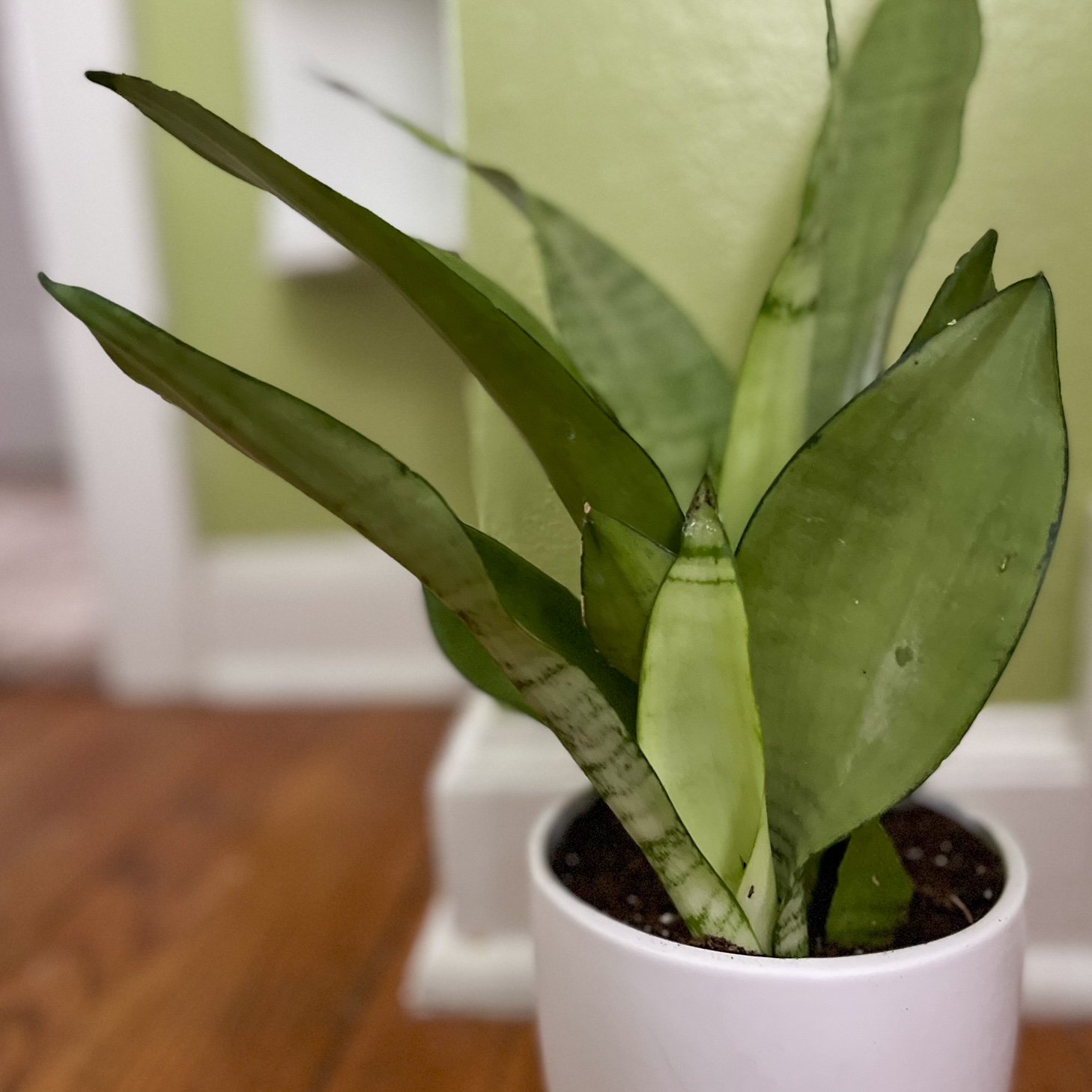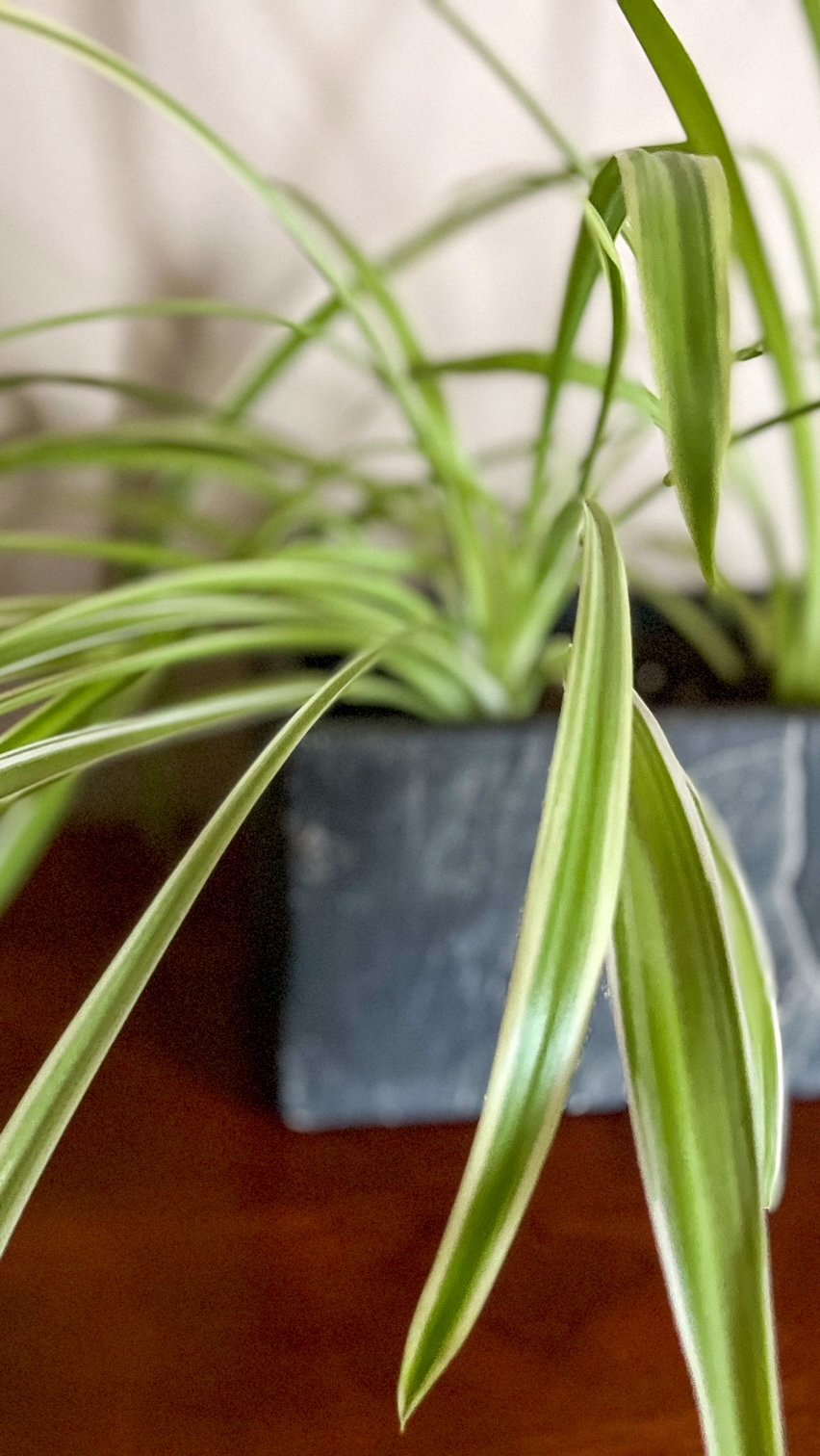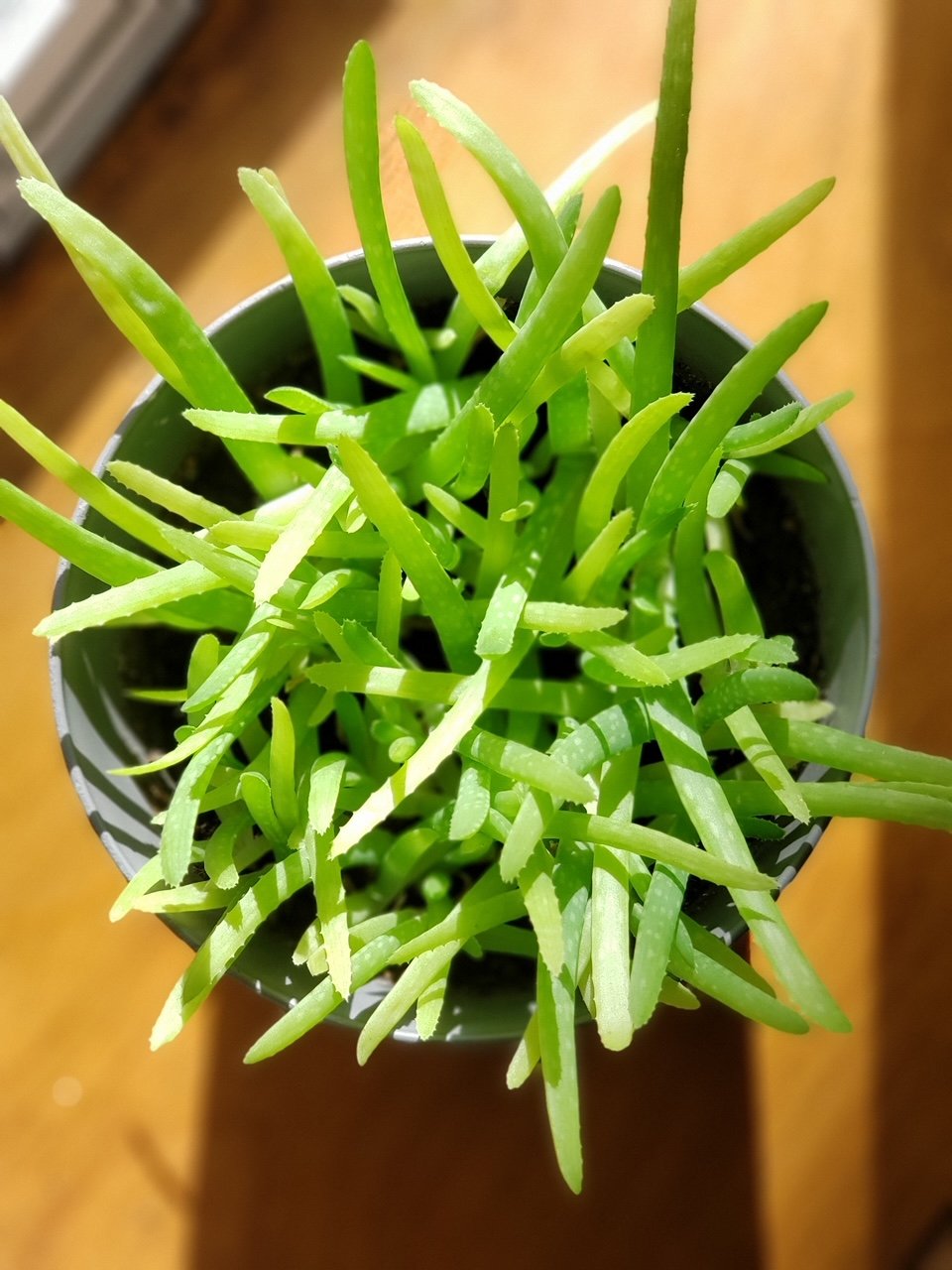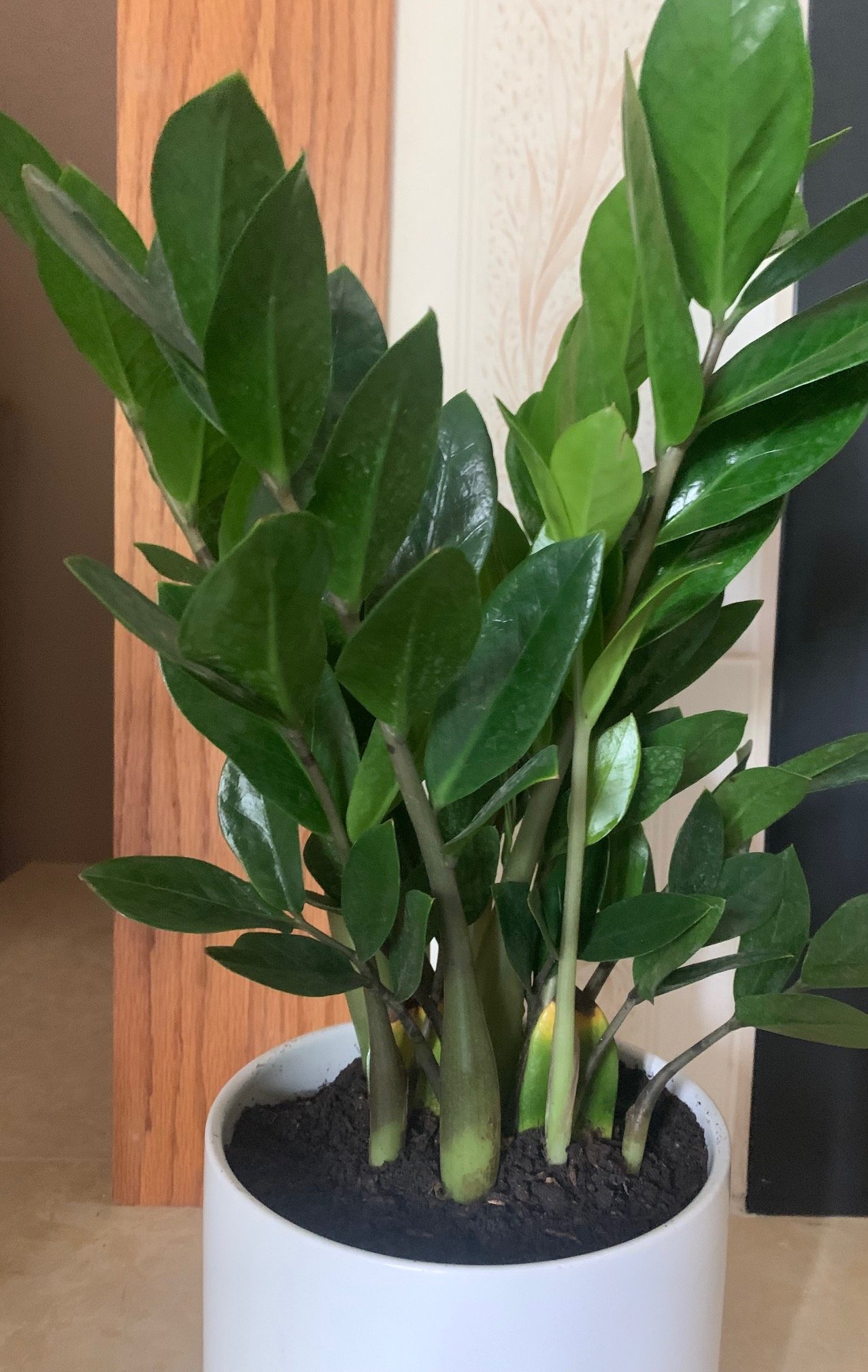The 5 Best (Easiest) House Plants to Grow
House plants require a spectrum of care. Some plants require so much care that it almost becomes a second job to maintain and oblige to their specific needs. Whereas, others are “easier” to maintain and require less attentive care. These plants are perfect for those who want a non-committal relationship and/or are just beginning their plant parenthood status.
Whether you are an experienced house plant owner or new to the world of house plants, below is a list of 5 "easy growing" house plants, with information about each plant, care/maintenance, as well as some lessons learned in our plant parenthood experiences.
5 Easy House Plants
1. Pothos Plant
-
Devil’s Ivy
-
Light: Bright (indirect) light to low light. This plant can even do well in a windowless room.
Water: Allow soil to dry before watering. Typically once a week or every other week is plenty for a pothos plant.
-
They are many types of pothos plants that vary in color and leaf shape. The most common is the golden pothos. Here’s a list of 10 other varieties that you can search for:
Neon pothos
Marble queen pothos
Hawaiian pothos
Glacier pothos
Manjula pothos
Satin Pothos
Pearls & jade pothos
Trebi pothos
Cebu blue pothos
Jessenia pothos
-
Yellow Leaves…well, causes of yellow leaves can be one of the following:
Too much water. Check the soil…if it is soaking wet, stop watering it until the soil dries out.
Too little water. Check the soil…if it is hard and crispy, give your pothos a drink asap!
One or two yellow leaves usually indicate that the plant is done with that leaf, so trim it off and let the rest of the plant flourish.
-
NO, Pothos Plants are considered toxic for both pets and humans. It causes irritation when exposed to the skin and/or ingested. However, it is not toxic just to the touch. We still keep our pothos out of reach of pets and kids…it’s a nice office plant.
2. Sansevieria Plant
-
Snake Plant, Mother-in-law’s Tongue
-
Light: Bright (indirect) light to low light, but can tolerate lower light conditions. Some even thrive in our darker basement.
Water: Allow soil to dry before watering.
-
Sansevieria plants are excellent air purifiers. Unlike most plants, sansevierias release oxygen at night. Perhaps that’s why people unknowingly like these plants in their bedrooms (aside from them being aesthetically pleasing).
-
Do NOT overwater this plant. This is an awesome neglect plant. It can thrive in low light and very little water environments; however, if given too much water, the leaves begin to turn to mush and you will not be able to revive your plant. Advice: If the soil is at all wet or damp, do NOT give it more water.
-
Nope, definitely not friendly for pets and mildly friendly for humans. Sansevieria plants are considered toxic if ingested and can cause gastrointestinal issues and numbing of the tongue. Keep away from curious/nibbling pets and tiny humans.
3. Spider Plant
-
Spider Ivy, Ribbon Plant
-
Light: Prefers bright, indirect light.
Water: Water well but don’t allow the soil to become soggy. Spider plants prefer to dry out between waterings.
-
Spider plants grow babies, called plantlets (hence giving them a spidery look). Once these “babies” have little white root nodes, gently pull them off of the shoot and plant them in a new pot of soil. In fact, our spider plant currently has at least 25 babies that need new pots! They are really easy to propagate that way.
-
We tend to forget to water these plants and they seem to thrive anyway. We can really tell when it’s been a while since they’ve been watered because the leaves start turning pale green and the tips begin to brown. Advice: Add water when they begin to look like that.
-
Yes! Spider Plants are considered non-toxic to pets and humans! Now, we wouldn’t suggest letting your pets and tiny humans chow down on an entire spider plant, but overall they are safe. We even have these plants in our kids’ bedrooms!
4. Aloe Vera Plant
-
Wonder Plant, Burn Plant
-
Light: Prefers bright, indirect light.
Water: Allow the soil to dry out before watering, then water until the soil is moist, but not soggy.
-
Many believe the aloe plant to be in the cactus family due to its similar traits and small spikes; however, aloe is actually in its own genus, called “aloe.” Additionally, it has tremendous healing properties and is nutritional, packed with more than 200 nutrients, and has some of the highest levels of antioxidants found in any plant on earth. Generally, we don’t eat gel from our aloe plant, but we do use it on minor cuts, scrapes, and burns. We simply cut a leaf or two and squeeze the slimy gel out and use it as a topical treatment.
-
As ironic as this sounds, aloe plants can get sunburnt! Usually, as the seasons change in where our plant lives, the light does as well. The window where our aloe plant(s) sit has extreme sun in the fall and spring; therefore, when our aloe is exposed to too much sun it begins to “sunburn.” A sunburned aloe plant's leaves look pale to almost yellow. Advice: if your aloe starts to sunburn, move it to an area where it doesn’t get as much hot, direct sunlight (even if it’s just for a temporary season location).
-
Sort of, the inside gel of the aloe plant is very human and pet friendly (as we use it topically and also can ingest it). However, the outer skin or layer is considered toxic. So…it is considered toxic because most pets and little humans that ingest it don’t peel the skin off before consuming it.
5. Zamioculcas Zamifolia
-
ZZ Plant, Zanzibar Gem, Zuzu plant
-
Light: Prefers medium to bright, indirect light, but can tolerate lower, indirect light as well.
Water: Allow the soil to dry out between waterings, the roots are succulent-like and store water (they are a very drought tolerant plant), so neglect is good.
-
ZZ Plants are excellent air purifiers. Like the Sansevieria, this plant releases oxygen at night. Not only is this a wonderful health plant, but its broad, feather-like leaves make a beautiful, green accent in a home. We have multiple ZZ Plants in our home (bedroom and living space).
-
DO NOT overwater this plant! In fact, the less water the better our ZZ plants have grown! These plants are very prone to root rot if overwatered. ADVICE: Water with small amounts, only when necessary, and choose a pot with a drainage hole, just in case you douse your plant with too much water.
-
Nope, all parts of this plant are considered “toxic” to pets and humans, but generally only cause irritation when exposed to the skin and/or ingested.
Hopefully, these 5 easy house plants inspired you to try plant parenthood, increased your knowledge, or at least reiterated growing skills for maintaining plants in your own home. Parenthood [plant] not only presents us with “feel-good” feelings while we care for and watch it/them grow, but they also have great health benefits that purify our air and add some green décor to our homes.
So…what are you waiting for?! Make your home a little greener, try out some of these “easy” plants!











